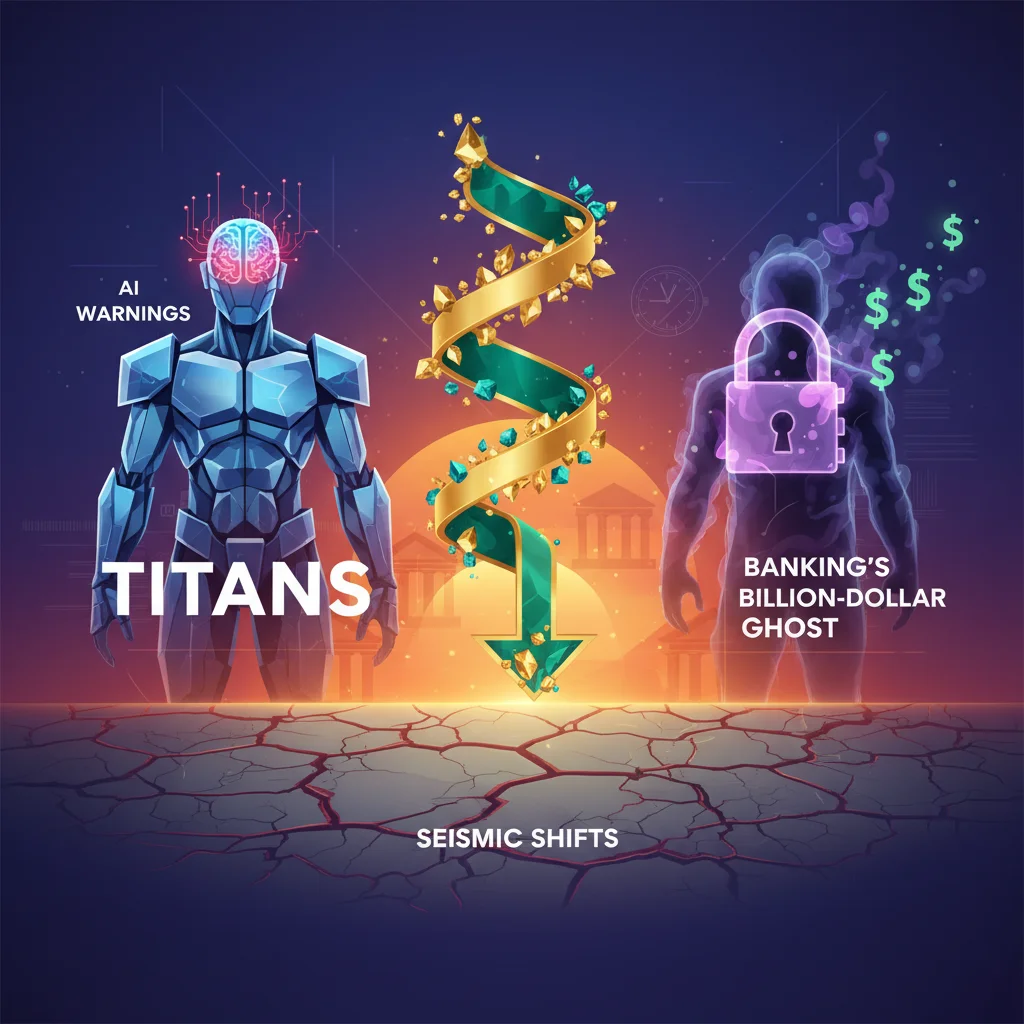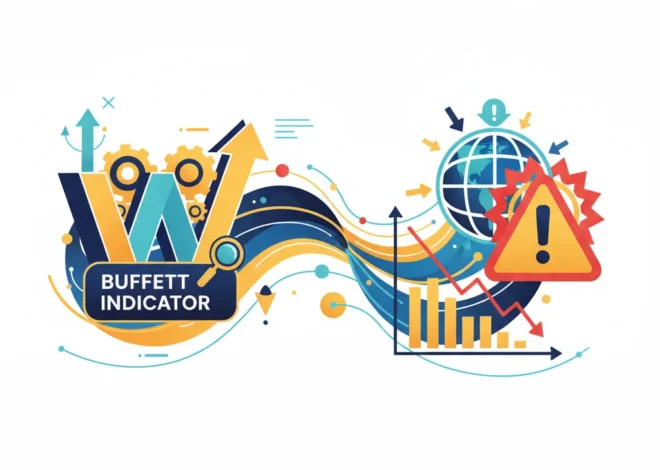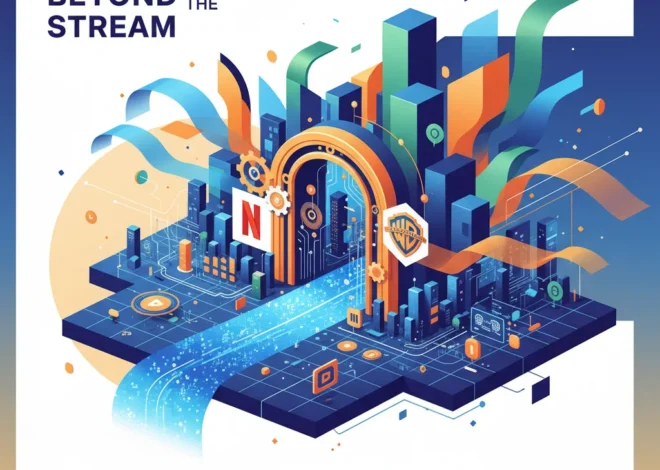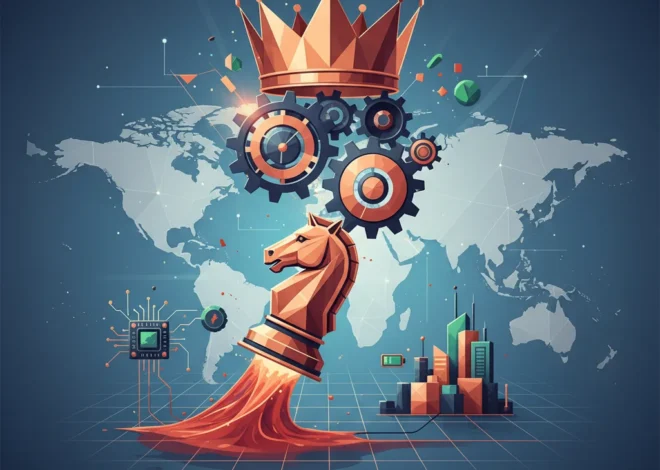
Titans, Trends, and Troubles: AI Warnings, Luxury Resets, and Banking’s Billion-Dollar Ghost
In the intricate dance of the global economy, seismic shifts often begin as subtle tremors. This week, three such tremors emanated from the distinct worlds of high finance, luxury fashion, and international banking, offering a compelling snapshot of the challenges and strategic pivots shaping our future. From Wall Street’s stark warnings about Europe’s AI ambitions to luxury giant Kering’s high-stakes bet on a single brand, and the long shadow of geopolitical missteps haunting BNP Paribas, a clear narrative emerges: concentration of power, risk, and strategy is the theme of the day. For investors, business leaders, and anyone attuned to the pulse of the market, understanding these interconnected stories is not just insightful—it’s essential.
We’ll dissect the warnings from the “Masters of the Universe” on the burgeoning AI gap, explore the daunting turnaround task facing Kering’s flagship Gucci brand, and unravel the complex legal web ensnaring one of Europe’s largest banks. Each thread reveals a deeper truth about the modern investing landscape, where technology, brand equity, and regulatory scrutiny are the new fundamentals.
The AI Alarm: Wall Street’s Sobering Verdict on Europe’s Tech Race
When titans of finance like JPMorgan’s Jamie Dimon and Blackstone’s Stephen Schwarzman speak, the markets listen. Their recent commentary, as highlighted by the Financial Times, paints a concerning picture for Europe’s role in the artificial intelligence revolution. The consensus is clear and unforgiving: Europe is falling dangerously behind the United States and China, a trend that could reshape the global economic order for decades to come.
This isn’t just about building the next viral chatbot; it’s about commanding the core infrastructure of the future economy. From financial technology (fintech) and advanced trading algorithms to supply chain management and drug discovery, AI is the foundational layer. The continent that leads in AI will likely lead in productivity, innovation, and economic growth. Dimon and Schwarzman’s warnings are a direct challenge to the European approach, which has often prioritized regulation over unfettered innovation. While the EU’s AI Act aims to create ethical guardrails, critics argue it may inadvertently stifle the continent’s ability to compete with the speed and scale of American tech giants.
The disparity is not just anecdotal; the data reveals a significant investment and innovation gap. This chasm has profound implications for the stock market, as capital naturally flows toward regions with the highest growth potential in transformative technologies.
To illustrate the divide, consider the key factors separating the US and EU AI ecosystems:
| Factor | United States Approach | European Union Approach |
|---|---|---|
| Venture Capital | Deep, risk-tolerant capital markets fuel ambitious, long-term projects. | More conservative, fragmented venture capital landscape, often with smaller funding rounds. |
| Regulation | Largely market-led, with a focus on fostering innovation and competition. | Proactive and comprehensive regulation (e.g., EU AI Act) focused on risk-management and ethics. |
| Tech Giants | Home to dominant global players (Google, Microsoft, Nvidia, Meta) driving research and infrastructure. | Lacks homegrown tech giants of a similar scale to anchor the AI ecosystem. |
| Talent Pool | A magnet for top global AI talent due to high salaries and cutting-edge opportunities. | Strong academic and research base, but faces challenges in retaining top talent (“brain drain”). |
For those involved in finance and investing, this divergence is a critical signal. It suggests that for the foreseeable future, the most explosive growth in AI-related equities may remain concentrated in US-listed companies. While European firms may excel in applying AI within specific industrial niches, the platform-level winners are currently emerging from across the Atlantic.
The Great Leisure Myth: Why AI and Productivity Won't Kill the 40-Hour Work Week
Kering’s Crown Jewel: A High-Stakes Wager on Gucci’s Revival
Shifting from the digital realm of AI to the tangible world of high fashion, another story of strategic concentration is unfolding. French luxury group Kering, parent company of brands like Saint Laurent, Bottega Veneta, and Balenciaga, is placing an enormous bet on the revitalization of its biggest, yet most troubled, asset: Gucci.
For years, Gucci was the engine of Kering’s growth, a cultural phenomenon that defined trends and delivered staggering profits. Recently, however, the brand has lost its luster. Sales have stagnated, and its creative direction has felt adrift, especially when compared to the relentless momentum of rivals like LVMH’s Louis Vuitton and Dior. In response, Kering is undertaking a massive strategic pivot, focusing its energy, capital, and creative talent on turning the Gucci battleship around. This is a classic “back to basics” maneuver, predicated on the belief that a healthy Gucci is the only path to a healthy Kering.
The strategy involves a complete creative overhaul, new management, and significant investment in marketing and retail experiences. The goal is to recapture the brand’s aspirational status and reignite desire among consumers. However, this single-minded focus is a double-edged sword. According to the source article, Kering is narrowing its focus intensely on its flagship brand, a move that carries both immense potential and significant risk.
Here’s a breakdown of Kering’s strategic gamble:
| The Upside (Potential Rewards) | The Downside (Potential Risks) |
|---|---|
| Gucci still possesses immense global brand recognition and a rich heritage to draw upon. | Consumer tastes are fickle; there is no guarantee the new creative direction will resonate. |
| A successful turnaround would have an outsized positive impact on Kering’s overall revenue and profitability. | Over-focus on Gucci could lead to the neglect of other promising brands within the Kering portfolio. |
| A revitalized Gucci could command higher pricing power, boosting margins across the group. | The turnaround is capital-intensive and could take years, depressing short-term stock market performance. |
For investors in the luxury sector, Kering has become a “show-me” story. The key metrics to watch will be Gucci’s comparable store sales growth, profit margins, and online engagement. Success could unlock significant value in the company’s stock, but any sign of a faltering turnaround could lead to further punishment from the market. This is a case study in corporate strategy where the fate of a multi-billion-dollar empire hinges on the revival of a single, iconic name.
BNP Paribas and the Billion-Dollar Ghost of Sudan
Our final story takes us into the world of international banking, where past actions can cast a very long and expensive shadow. French banking giant BNP Paribas is once again grappling with the fallout from a decade-old scandal involving the violation of US sanctions against Sudan.
The context is crucial. In 2014-2015, BNP Paribas was hit with a landmark fine of nearly $9 billion by US authorities for illegally processing transactions for clients in sanctioned countries, including Sudan, Iran, and Cuba. Now, the US Supreme Court has allowed a lawsuit to proceed, brought by victims of the Sudanese regime’s terrorist attacks, who argue that the bank’s actions helped finance the atrocities. This ruling opens a new, dangerous chapter for BNP Paribas, exposing it to potentially massive civil liabilities on top of the record-breaking fines it has already paid.
This development is a stark reminder of the evolving nature of risk in the global banking sector. For years, the primary threat was regulatory punishment. This case establishes a powerful precedent for significant civil liability, where banks can be sued directly by the victims of regimes they are found to have illicitly supported. This dramatically raises the stakes for compliance and due diligence when operating in high-risk jurisdictions.
The implications for the financial industry are profound:
- Geopolitical Risk is Financial Risk: This case solidifies the link between a bank’s geopolitical exposure and its bottom line. It’s no longer enough to simply navigate sanctions; banks must now consider the potential for civil lawsuits years down the line.
- The Rise of “Lawfare”: Financial institutions are increasingly becoming targets in legal battles related to foreign policy and human rights, turning compliance failures into massive potential payouts for plaintiffs.
- ESG and Reputational Damage: Beyond the financial cost, the association with a brutal regime inflicts deep and lasting damage to a bank’s reputation, affecting its relationships with customers, employees, and ESG-focused investors.
For BNP Paribas, this is a ghost that refuses to be exorcised. It serves as a cautionary tale for the entire banking and finance industry about the true cost of compliance failures. The economics of banking in volatile regions must now be calculated not just in terms of potential profits and regulatory fines, but in the unquantifiable risk of billion-dollar civil judgments.
The Private Equity Paradox: Why The Industry's Big Comeback Is An Inside Job
Conclusion: A Unified Lesson in a Fragmented World
From the digital frontier of AI to the polished floors of luxury boutiques and the solemn halls of justice, these three stories deliver a powerful, unified message. The modern economy demands a sophisticated understanding of concentrated risk and opportunity. Whether it’s a continent’s risk of being left behind in a technological arms race, a corporation’s bet on a single brand, or a bank’s reckoning with its past, the consequences of strategic choices are more pronounced than ever. For those navigating the complexities of the stock market and the broader world of investing, the lesson is clear: look beyond the surface, understand the concentrations of risk, and remember that in a globally connected world, the tremors in one industry can quickly become the earthquake in another.


